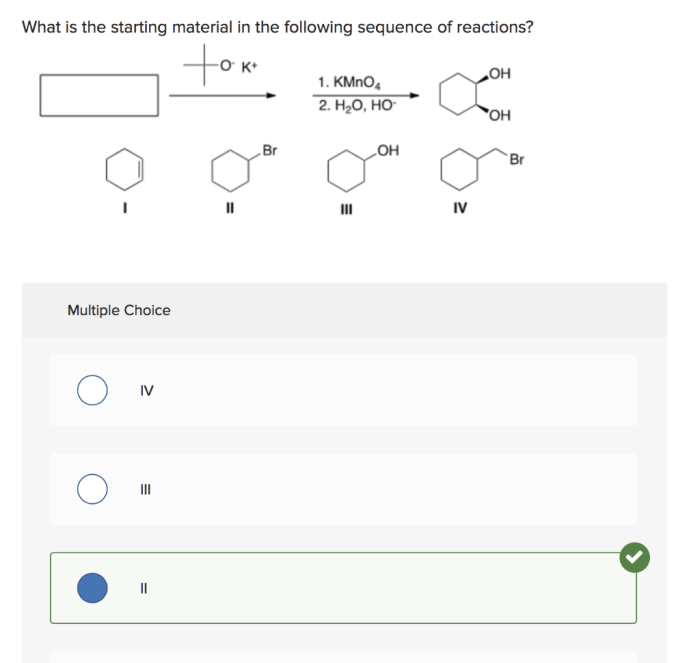What is the starting material in the following reaction – In the realm of chemical reactions, the identification and understanding of starting materials play a pivotal role in determining the outcome and efficiency of a reaction. This comprehensive guide delves into the concept of starting materials, exploring their definition, methods of identification, and the factors that influence their selection.
Starting materials serve as the foundational building blocks upon which chemical reactions are constructed. They are the reactants that undergo transformation during a reaction, ultimately leading to the formation of products. Understanding the starting materials is essential for predicting the products of a reaction and optimizing its outcome.
What is the Starting Material in a Chemical Reaction?: What Is The Starting Material In The Following Reaction

In a chemical reaction, the starting material refers to the initial substance or substances that undergo transformation to produce the desired product or products. Identifying the starting materials is crucial in understanding the reaction mechanism and predicting the outcome of the reaction.
Identifying Starting Materials
Identifying the starting materials in a reaction involves analyzing the chemical equation and understanding the reaction type. Common methods include:
- Reactants on the left side of the equation
- Molecules or ions that provide the functional groups or atoms necessary for the reaction
- Substrates in enzymatic reactions
Examples of Starting Materials, What is the starting material in the following reaction
Starting materials vary widely depending on the reaction type. Some common examples include:
| Starting Material | Reaction |
|---|---|
| Alkenes | Addition reactions |
| Alcohols | Substitution reactions |
| Ketones | Condensation reactions |
| Carboxylic acids | Esterification reactions |
Factors Affecting Starting Material Choice
The selection of starting materials is influenced by several factors, including:
- Reactivity: The starting materials should be sufficiently reactive to undergo the desired transformation.
- Availability: The starting materials should be readily available and cost-effective.
- Cost: The cost of the starting materials can impact the overall feasibility of the reaction.
Design Strategies for Starting Material Selection
Optimal starting material selection involves careful consideration of factors mentioned above. Strategies include:
- Retrosynthesis: Breaking down the target product into simpler starting materials
- Functional group interconversions: Converting one functional group into another to create the desired starting material
FAQ Guide
What is the definition of a starting material?
A starting material is a reactant that undergoes transformation during a chemical reaction, ultimately leading to the formation of products.
How can I identify the starting materials in a given reaction?
Methods for identifying starting materials include analyzing the reaction mechanism, examining the functional groups present, and considering the reagents used.
Why is it important to understand the starting materials for reaction analysis?
Understanding the starting materials is essential for predicting the products of a reaction, optimizing its outcome, and designing efficient reaction pathways.


